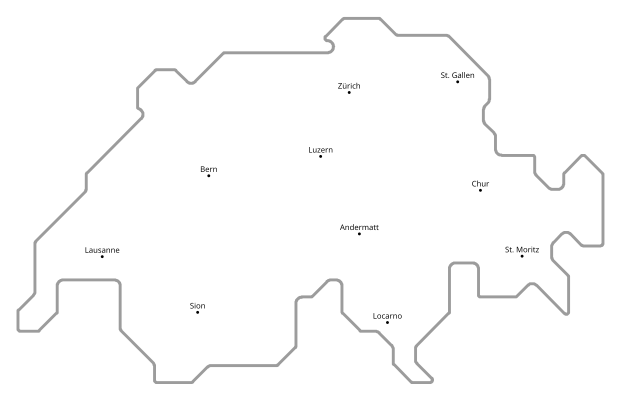Soil as a site factor in Swiss forests
Daniel Christen
Roger Köchli
Flurin Sutter
Marco Walser
Lorenz Walthert
Stephan Zimmermann
Alois Zürcher
2010 - 2025
CooperationThis project delivers soil and site related information for Swiss forests which are based mainly on measured values: (i) response of tree species to environmental variables, (ii) quantitative characterisation of the ecological niche of forest plant species, and (iii) soil ecological indicator values for forest plant species.
Contents

Soil properties of forest stands can be assessed easily and at low cost, if reliable soil ecological indicator values of plant species are available. In Switzerland, however, little is known about the effective response of forest plant species to measured chemical and physical soil properties. This is the case even for the most common tree species.
Compared to Landolt (1972) or Ellenberg (1992) much more soil data is available today. Currently, the database of the RU 'Forest Soils and Biogeochemistry' contains morphological, physical and chemical data on about 1000 soil profiles across Switzerland. In addition, a floristic inventory according to the method of Braun-Blanquet (1964) is available for each site. Such a comprehensive database is a prerequisite for promising ecological evaluations at the plant-soil interface.
Objectives
- to explore the response of common forest plant species to environmental variables, in particular water and nutrient availability,
- to document soil related distribution limits of sensitive plant species (ecological niche),
- to derive ecologcal indicator values from the response curves,
- to compare our indicator values with those of Landolt (1972) and Ellenberg (1992).
Planned products
- Web-application: ecological amplitudes and indicator values of common forest plant species,
- ISI-publications: response of tree species to environmental variables.
Methods
- Morphological soil description and classification according to Walthert et al. (2004),
- Sample preparation and analytical methods according to standard methods (Walthert et al., 2004). Measured soil parameters: organic C, total N, pH, H-acidity, exchangeable cations, soil texture, soil density,
- Modelling of water regime (i.e. drought) with the Coupmodel (Jansson and Karlberg, 2004),
- Vegetation inventories using the method of Braun-Blanquet (1964),
- Relations between environmental variables and vegetation are analysed with statistical methods (e.g. GLM).
